Introduction to Yosemite National Park 7-Days Itinerary
Yosemite National Park in California’s Sierra Nevada mountains is a dream come true for nature lovers. There are lots of different kinds of animals and lovely views. There are big rivers and high rock walls. That’s why a seven-day plan lets you see the park’s best known sights and lesser-known gems at your own pace. Your time in Yosemite will be better if you read this book, no matter how many times you’ve been there. This guide tells you how to climb, see the sights, and chill out. The paths up Half Dome are tough, but the views from Glacier Point are beautiful, and Yosemite Valley is quiet. Every day is a new adventure. Get ready to see one of the world’s most beautiful national parks. Also read Boston itinerary 7 Days
Why Yosemite National Park is Becoming a Major Tourist Attraction
Yosemite National Park has been a popular destination for nature lovers for a considerable amount of time. However, in recent years, there has been a significant increase in both the flow of tourists and the influx of international visitors. Over the course of a few decades, Yosemite National Park has grown to become a major national park tourist attraction in the United States, thanks to the following factors:
1. Stunning natural beauty
These aspects are perhaps the main reasons why Yosemite’s views are becoming increasingly breathtaking. This park is home to giant granite rock formations, large trees, particularly sequoia trees, and forcive waterfalls. Places such as El Capitan, Half Dome, and Yosemite Falls are well-known attractions that people come to witness with their own eyes all the splendor that has found its way into picture books. In spite of this, through such scenic features as the gigantic Glacier Point and the stretch of meadows in Yosemite Valley, the park is a reservoir of beautiful scenery that is attractive to any person in a quest to view nature.
2. Variety of Outdoor Activities
This perhaps explains why Yosemite National Park offers a broad scope of outdoor activities given the types of terrain available. Visitors can enjoy scenic walks along the valley floor to the steep incline of the Half Dome. These include cycling, rock climbing, horseback riding, and even skiing during the winter season if the vegetation permits. There are many simple and more complicated paths, so everyone can try to enjoy the park’s view on their own. Rock climbing the tall, steep face of El Capitan has become a popular form of tourism for adventurous tourists seeking something more.
3. Wildlife and Biodiversity
Yosemite wildlife is the addition to natural recreational areas for those who are interested in animals existing within this park. The fact that the park offers a likelihood of spotting black bears, mule deer, and coyotes in equal measure—over 400 species of birds—makes the park equally appealing. I had to say that people become interested in a possibility to meet wild animals within their environment, and Yosemite has it. The park provides ample land space comprising of meadows, forests, and rivers; as such, it provides a spirited and spirited view of the park.
4. Accessible Natural Wonders
This excellent national park is located with easy accessibility to such cities as San Francisco and Los Angeles, and therefore Yosemite Valley. The central region of this generous park differs from other somewhat extended national park areas. This in turn has been one main reason that makes Yosemite more popular, since people can always set to visit Yosemite while other vacation spots in California are on delay. This makes it easy for all manner of tourists: drives, road transportation of tourists within the park, well-established camp sites, and magnificent lodges.
5. Eyewitness Account of Cultural and/or Historical Relevance
Of course, Yosemite has cultural and historical value, which definitely adds spice for tourists. The park has a long time been a symbol of the natural resources of America; the park has been painted by Ansel Adams and featured in many cinematic productions. There too, Yosemite has domestic cultural connection because the place was once occupied by the Ahwahneechee Native Americans. Currently, the park is used for the preservation of the cultural assets regarding this area by way of museums and other informational facilities concerning the history of the park and its flora and fauna as well as the locals.
6. Photographer’s Paradise
Because of its beautiful scenery, Yosemite has been one photographer’s paradise, whether they are professionals or hobbyists. Given that the park boasts beautiful scenery, effectively light settings, and orange formations, depicting a wide and diversified park is not a challenge at all. Instagram, travel blogs, and other forms have also helped make Yosemite famous as tourists post pictures of Yosemite’s must-see treasures.
7. The conservation agenda has had much more emphasis.
This may be attributed to the fact that the park is listed under the United States’ National Parks, and newer travelers are conscious about the environment, and sparing some cash for a vacation would prefer going to the eco-friendly Yosemite park. As ecotourism gains increased importance, vacationers visit Yosemite to enjoy scenic attractions in an unspoiled environment. As a result of its overemphasized passive management approach, which aims at preserving the park so that later generations can be able to reap from the world’s natural wonders.
8. The Best Moments You Will Never Forget
Yosemite provides for all different types of travelers, from independent tourists to hiking enthusiasts and people with children. It is appealing for families due to the offers of educational programs and guided as well as kid-friendly tours in the park. However, nature lovers in search of a less crowded experience are not left out; there are several quieter trails, many corners, and secluded areas where the physically active tourists can escape and feel nature.
Conclusion
The attractive physical nature of Yosemite, the presence of several forms of life, easy accessibility, and the park’s history make it the most popular spot to visit all over the globe. Conservation and embracing of out-door activities make a definite subject that this park should attract all age groups and different types of people for enduring experiences. Yearning for natural endowment, the quest for Yosemite will steadily increase over the years, making the park a foundation for all travelers visiting different parts of the world.
7-Day Itinerary for Yosemite National Park
Yosemite National Park boasts many of the earth’s natural treasures, such as rugged cliffs made from granite, waterfalls, and sequoias. If you’ve planned to spend a week in the park, you need not rush through the park while enjoying the beauty of the place and participating in some of the fun activities. Here are some recommendations of things that you can do and see during your tour in Japan based on a 7-day plan for tourists and travelers at their first visit to this country or during their next trip.
Day 1: Tourists arrive at Yosemite and explore the Yosemite Valley.
Morning: Yosemite National Park Arrival
You begin your visit at Yosemite National Park through one of the entry points, including the Big Oak Flat, Arch Rock, or the South entrance. If you’re having an overnight break, get your accommodations at a lodge, cabin, or campsite within or outside the park. Yosemite Valley is a good place to stay because it is centrally located and many of the attractions of the park are near by.
Afternoon: Yosemite Valley Overview
On the first day, you should take a whole day just to get accustomed to Yosemite Valley, one of the many highlights of the park. Always begin your Yosemite tours at the Yosemite Valley Visitor Center for overview information about the park and to get the maps/guides for the rest of your tour. Have your camera ready for Tunnel View, one of the most watched views in Yosemite, and another must-see is El Capitan, Half Dome, and Bridalveil Fall.
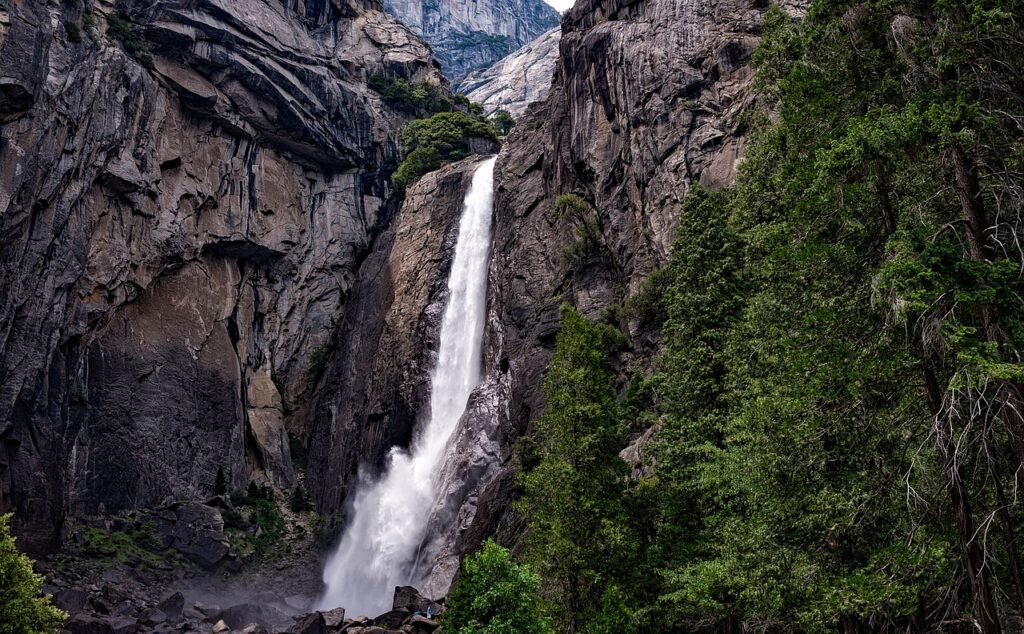
Evening: Yosemite Falls
As the day comes to a conclusion, take 25 minutes of your time to walk to Yosemite Falls, one of the biggest waterfalls in North America. When you are getting here in spring or early summer, the waterfalls will be at their highest, thus making a spectacular view. If you are lucky to be in the right location, take a break and view the sun setting in the valley before proceeding to your next destination to spend the night.
Day 2: Glacier Point and Taft Point
Morning: Glacier Point
Begin the second day with a drive or shuttle to glacier point, which gives you the best view of Yosemite Valley, half dome, and high Sierra. Here there is one of the best views in most of the park, and you should not miss it. If you fancy yourself in good light, you can hike the Four Mile Trail that emanates from the valley to the Glacier Point. It’s quite challenging but also very much worth the effort to see the beauty of the surrounding area.
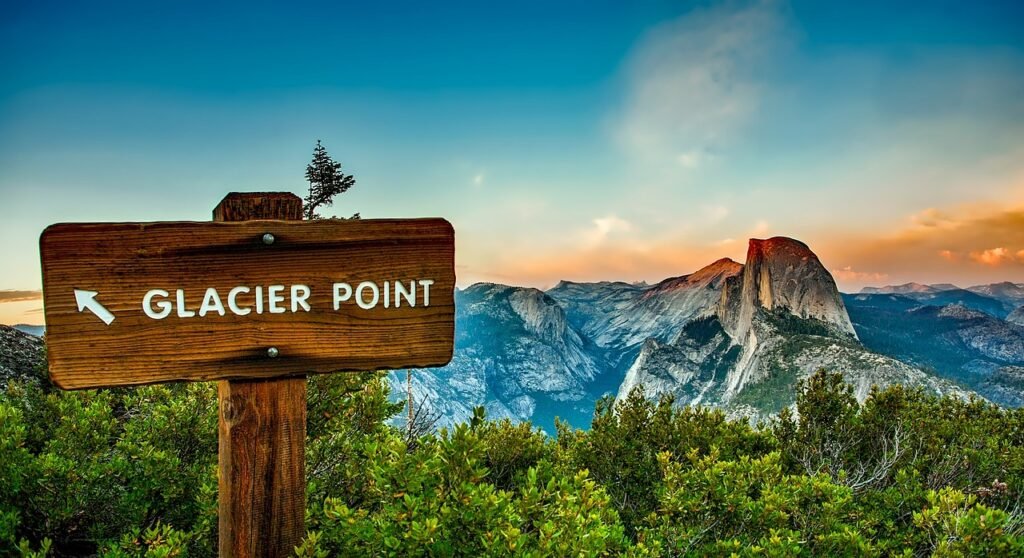
Afternoon: Taft Point and Sentinel Dome
When admiring the Glacier Point view, I suggest that you take a smaller and less crowded trail, namely the Taft Point trail. The trail takes approximately 2.2 miles and is round trip; you should consider going over the Yosemite Valley, especially the edges of Taft Point. In case you can spare more time, you might want to head towards Sentinel Dome, which has another panorama and overlooks the most recognizable sights in the park.
Evening: Stargazing
Yosemite is also characterized by the lack of light pollution, and this makes the place perfect for astronomical activity such as stargazing. Return back to Glacier Point in the evening because the view of stars, particularly of the Milky Way, is awesome at this point. It offers an odd beauty in its simplicity: pack a blanket and lay down on a soft grass, look up, and get amazed.
Day 3: Giant Sequoia—Mariposa Grove
Morning: Mariposa Grove
On Day 3, you should take a drive to the Mariposa grove of Giant Sequoias near the park’s south entrance. This grove alone contains more than half a million mature giant sequoias, some of the world’s largest and oldest trees. The Grizzly Giant Loop Trail (2 miles) leads visitors to the two most photographed trees in the grove: the Grizzly Giant and California Tunnel Tree.
Afternoon: Wawona and Chilnualna Falls
Wawona is a town that is in close proximity to Mariposa Grove, so if it is lunchtime upon your exit, then head there. Go to Pioneers’ Yosemite History Center, as it will provide information and exhibits about the park’s past. If you are game for some more hiking, then head for the Chilnualna Falls, which are not as popular as the Yosemite’s Valley Falls.
Evening: Relax at Your Lodge
Spend the day trailed through strenuous hikes, and then spend the night at a chosen lodge or campsite. Have a cookout or an early night in readiness for more fun activities that are on the menu.
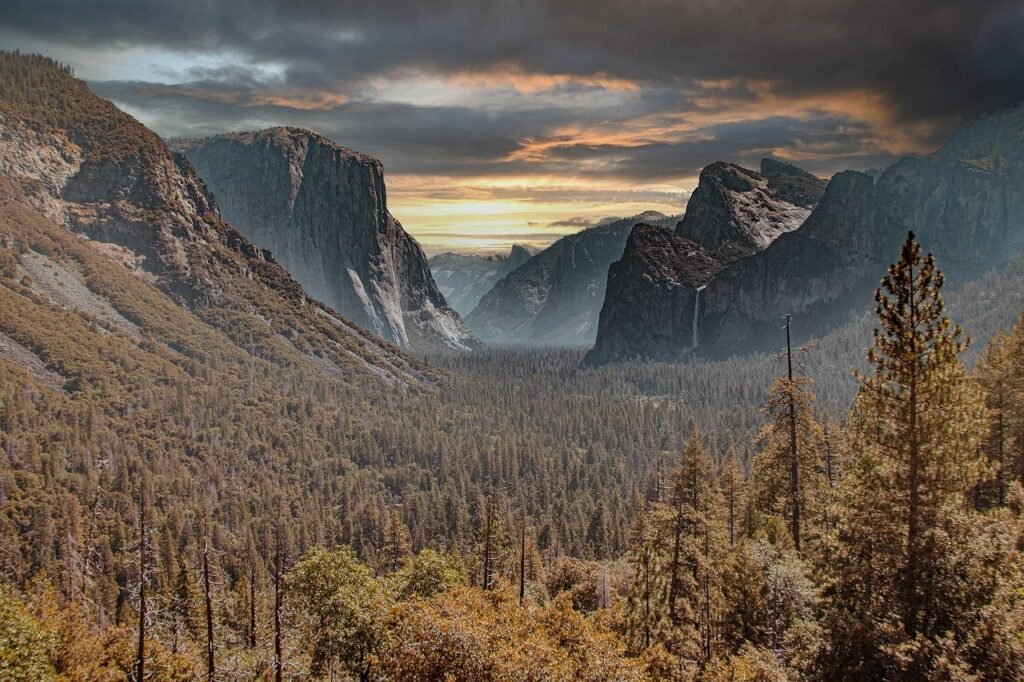
Day 4: Mist Trail and Vernal & Nevada Fall
Morning: Mist Trail to Vernal Fall
Perhaps the most popular hike in Yosemite, the Mist Trail should definitely be on your list. There is no better time than this before the other tourists arrive and decide to hike for Vernal Fall, which is a 2.4-mile round trip. The name of the trail says it all; you will be misted by the water fall as you climb the granite stairs beside the base of the fall. It gives beautiful scenery’ different views along the way, and the distance increases as one ascends.
Afternoon: Continue to Nevada Fall
For those who want to go even further, keep walking to Nevada Fall, which is another 5.4 miles to and from the fall. The views from the top are breathtaking, and while the hike is essentially the same, the crowds die down after this fall. Remember to take enough water and other foods for the whole journey.
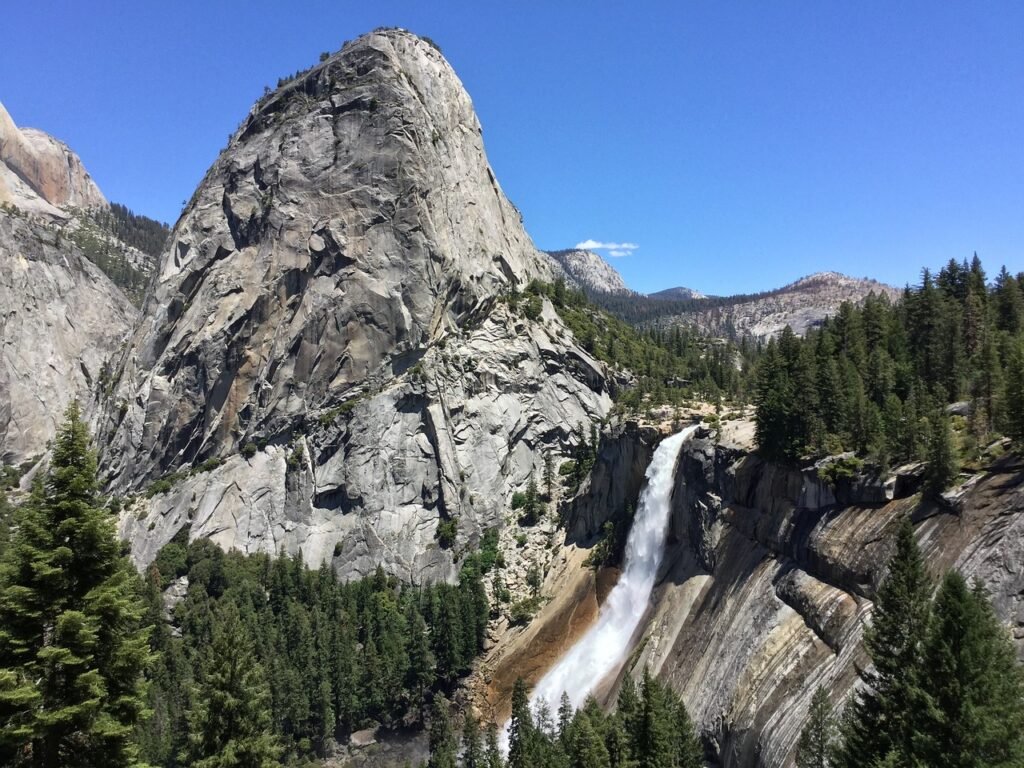
Evening: Relax in Yosemite Valley
At the end of the day, head back to Yosemite Valley for dinner at the park restaurants or bring sandwiches that can be eaten along the valley floor. Spending the evening watching the beautiful scenery that has been on display throughout the day is the best thing you can do.
Day 5: Tioga Road and Tuolumne Meadows Examples of such locations include;
Morning: Drive Tioga Road
You can begin day 5 with the Tioga Road drive. This is an external trip that offers the best views of Yosemite’s high country. Ignore the Olmsted Point if not willing to stop over because this spot gives a different view of the Half Dome. The latter grows wider and wider into alpine meadows and mountains as you progress even farther.
Afternoon: Tulumne Meadows
Get to Tuolumne Meadows, one of the most beautiful areas of Yosemite that consists of a high-altitude subsulphine meadow fringed by jagged granite faces. Some of the relatively flat trails located within this region include Lembert Dome and Parsons Lodge. Tuolumne Meadows is equally good for picnics by availing food supplies that are available in shops found around Yosemite High Country.
Evening: Tenaya Lake
Tenaya Lake is beautiful, and to end the day in calm surroundings by the waterside is always an excellent way to relax before descending Tioga Road once more. This is probably one of the cleanest lakes I have seen on the tour, and one could swim, paddle using a kayak, or even sunbath at the edge of this lake. This view unveils beauty, and the scenery where the sunlight falls on the mountains of the surroundings is beautiful at sunset.
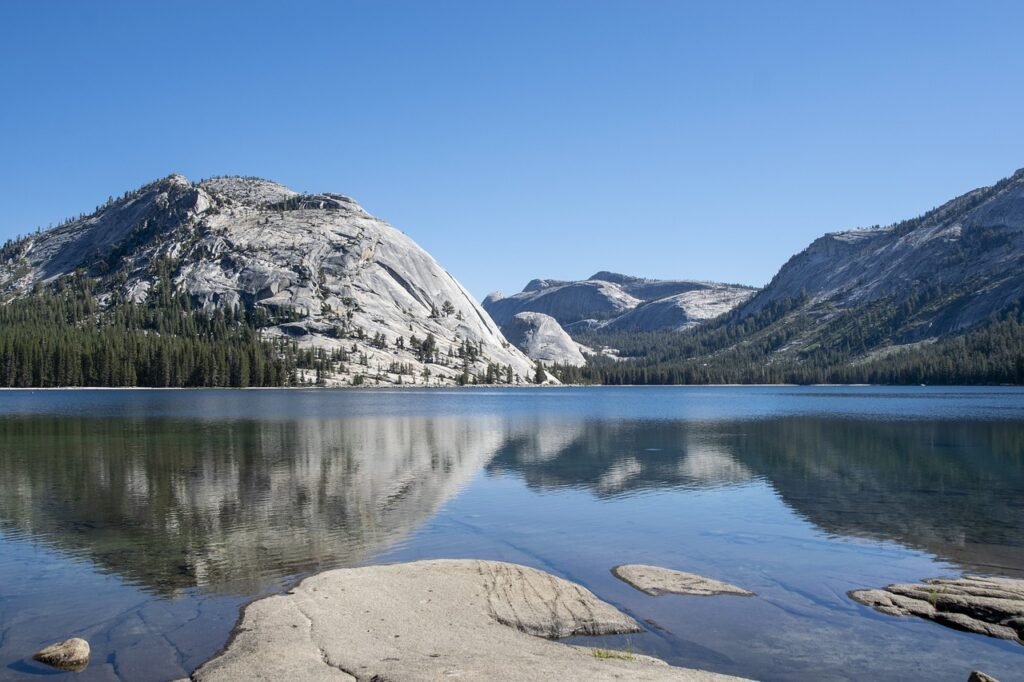
Day 6: Half Dome or Cathedral Lakes
Morning: Half Dome Trail hike (permit necessary)
For the experienced hiker, if you have managed to get a permit, Day 6 is the right time to climb the famous Half Dome. This strenuous trail is ranked 16 miles round trip and will get you to an elevation of 4,800 feet. The view is one of the most breathtaking in the world. This final push for the summit through the cables can be jenningly thrilling as a way to tackle through Yosemite’s most popular mountain.
Alternative: Cathedral Lakes
If hiking is not strenuous and you want to get equally stunning views, you should try the Cathedral Lakes trail. This is a 7-mile roundtrip crossing over beautiful high-country meadows and ending at two alpine lakes beneath Cathedral Peak. This is one of the attractions that can be fitted for a moderate hike that does not entail one’s setting of a half-dome hike.
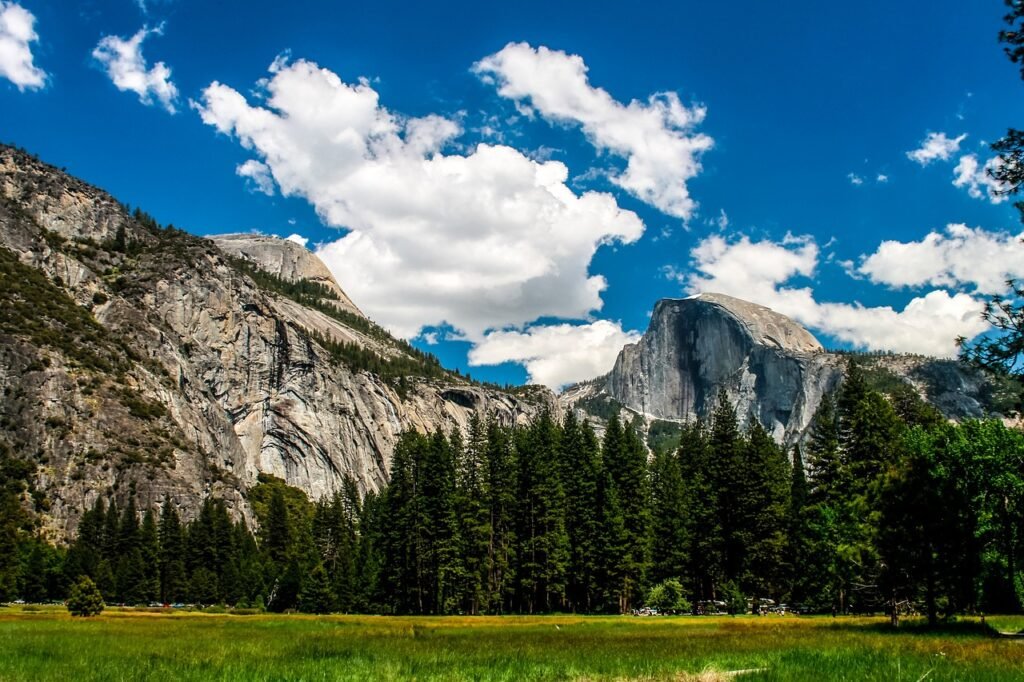
Evening: Return to Yosemite Valley
It is always good to relax after a day of either steep hiking or getting through the high country and head back to Yosemite Valley. Savor a good meal at one of the valley’s restaurants or cook a barbecue meal if you are overnighting at the park.
Day 7: Travel and last frontier
Morning: Last Look at Yosemite Valley
Instead, turn around once more before leaving Yosemite Valley and take a good look at its breathtaking beauty. There are some locations that might have captured your fancy the first time around, and as such, you might revisit these areas or take short strolls, such as the Lower Yosemite Fall Trail or the Bridalveil Fall Trail. It is also a good time to go to any of the other places that might have interested you, like the Ansel Adams Gallery.
Afternoon: Farewell to Yosemite
When your tour is through, start your tour out of the park and keep stopping for photo shots wherever there are pullouts before leaving. If you used Tioga Road as your through route you go out at the eastern exit or if you used one of the two southern entrances you go out at them.
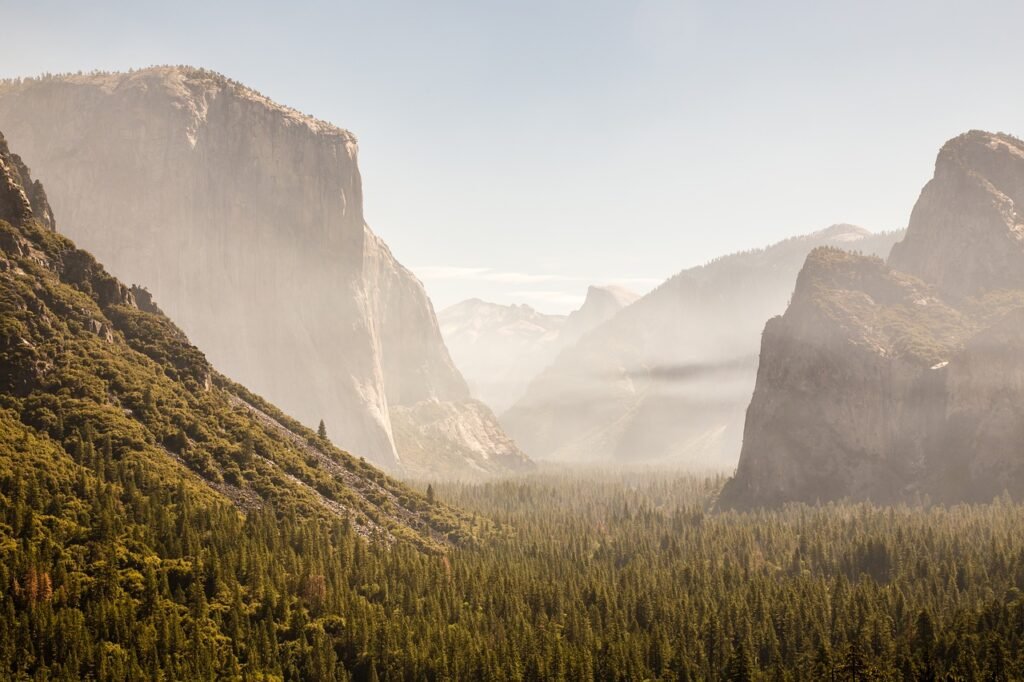
Evening: Reflection and Departure
Before you go through some final points about the area, take a while to marvel at the natural splendor you have seen during the past week in Yosemite. Yosemite is one of those places you are likely to remember and cherish for a lifetime and this 7 days tour will ensure you create such impressions. Safe travels!
That is why I designed this 7-day itinerary for visiting Yosemite while incorporating lesser-known places and trails and helping you to make the most of your trip.
Essential Tips Before Traveling to Yosemite National Park
Traveling, especially to Yosemite National Park, is always fun, but first you need to plan and prepare so that you get to have the best time out. If you are planning to make a day trip to the park, or perhaps planning to go camping for a week, there are a few things that you need to consider before you set off to the park.
1. Park Pass
Before getting into Yosemite, buy a pass for Yosemite or the America the Beautiful Pass. The America the Beautiful Pass allows you to enter all national parks within the United States, and that’s why for those planning to travel to other parks in the remaining year, the pass is an excellent one to purchase. Yosemite’s entrance fee is payable only at the entrance, although it can be paid in advance and save time.
2. Outdoor Gear
Bring necessities for Yosemite’s various surfaces. An important item is a firm pair of hiking shoes—more so if you have in mind some steep terrain of the park. Pack some items that would fit into a strong backpack, which will allow you to carry these necessities comfortably. If you are going for a longer hike, it is recommended to carry extra water, and this is where you can come in handy with a hydration pack.
3. Clothing
Unfortunately, the weather in Yosemite is very unpredictable and can change very fast, so I recommend wearing layers of clothing that you can remove or put on depending on the weather. During summer, always wear a hat, preferably with a wide brim, sunglasses, and sun lotion to shield you from the scorching sun. Furthermore, having the right hiking sock design will help avoid blisters during rugged trails or hills.
4. Camping Equipment
If you are considering camping, make sure to take along equipment like a good tent, a good warm sleeping bag, a comfortable foam pad for sleeping on, and portable cooking utensils for meal preparation. There is a camping space in Yosemite, and you should better make your reservation early in advance since there are many people who prefer camping in Yosemite. Quality wear will make you have the best wear that will make you comfortably stay warm when in the wilderness at night.

5. Food & Water
Camping has very few options within the park, so bring some packaged food like nuts, energy bars, and fruits, among other snacks. Take enough bottles of water for the exercise; probably you are involved in some climbing during hot stations. Using a BPA-free container for drinking water is a great convenience as well as making a small contribution to preserving the environment.
6. Navigation Tools
While many of the trails are easy to follow, you should also have traditional tools such as a map and compass in the event the GPS signal on your phone is weak. Any injuries during the trails should be manageable with a first aid kit that should always be packed when traveling.
7. Photography Gear
Most of Yosemite looks telegenic and should be a shutterbug’s paradise, so carry a good camera, a tripod is useful for those lengthy photo sessions, and spare batteries. This gear will assist you in capturing the park view at all these times.
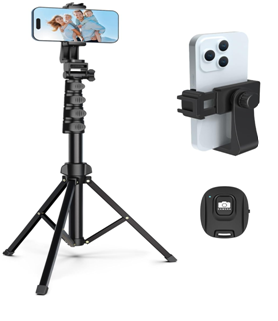
8. Personal Items
Other important personal items that should be carried include bathing gadgets, insect repellent, and creams for protecting the skin from the sun. Especially in the summer evenings, it is useful to have insect repellent.
9. Emergency Supplies
As to the essential things, the list is the following: a whistle to call to help in an emergency, a multitool for small adjustments and repairs during the trip.
10. Recreation Gear
If cycling or rock climbing, the correct recreation apparel must not be forgotten. You will be able to engage in various activities in Yosemite since having your equipment will enable you to maximize all the activities in the park.
Final Thoughts
Stick to the highlighted best practices and be equipped right, and your adventure in Yosemite National Park will be safe, fun, and memorable. So don’t forget to be polite to other park users, and do check that you have left no trace and have conserved the park for the next generations to explore. Happy exploring!
FAQs
1. Is it necessary for tourists to book for Yosemite National Park before they visit the park?
Prior reservation is not necessary for visiting Yosemite if you are not going there during peak season, when a number of agencies may have put in measures restricting access to the park. Nevertheless, it’s advisable to book a reserve for accommodation and camping.
2. When is the best time to go to Yosemite?
The most suitable time to visit Yosemite will therefore depend on the individual’s preference as to what they wish to do during their holiday. Waterfalls can be best seen in April–JJune, whereas full access to trails and attractions is possible in July–AAugust. Tourist traffic is the lowest during the so-called fall—September, October; winter—November till March is perfect for slalom.
3. How can one purchase the park pass?
You can either order the America the Beautiful Pass or a Yosemite entrance pass on the internet at the National Park Service website or obtain one directly at the entrance of the park.
4. What should I wear for hiking in Yosemite?
Rock casual to allow mobility and change of attire for the occasion; sturdy and comfortable hiking shoes to increase level of grip; and proper protective gear against the sun, which include hats and sunglasses plus protective lotion. Some things to take with you include comfortable hiking socks in order to avoid blisters.
5. Yosemite does allow camping, and as much as the park is enticing, a permit is required when camping in Yosemite?
Indeed, Yosemite has many campgrounds, but you have to be lucky to get into any of them, as most will require prior booking during the peak period. If you want to hike with a backpack with no specific trail in mind, you need a wilderness permit.
6. What kind of gear should I carry for a photography tour of Yosemite?
Photography shall require a camera, a tripod, and backup batteries. Okay, Yosemite has major landscapes, so you will need to photograph the scenery in the morning, evening, and especially during the hikes.
7. Is Yahoo, of course, reachable with a cell phone, and is there Wi-Fi in Yosemite?
There is poor cell phone signal in Yosemite Valley, while there is no signal at all in the backcountry. Most of the lodges and visitor’s centers provide internet facilities, but the speed of the internet is comparatively slow.
8. What measures do I need to ensure as a visitor to Yosemite?
One should always carry a map, a compass, and a first aid kit, or at least possess some basic knowledge of first aid. And get ready to meet some wild animals, and do not approach them or get close to them. Do not go off the tracks and walk the trails and explore other areas likely to cause problems, such as falls near cliffs or water falls.
Conclusion
Thus, planning to have a trip to Yosemite National Park will be more enjoyable and safe one. That is where planning comes in, from obtaining your park pass right down to the clothing gear you will need to wear in the park. That is why, no matter if you are camping, hiking, or enjoying beautiful views, good equipment starting with proper shoes and ending with warm clothes and navigation equipment is worth having. But do not leave home without enough food and water, emergency provisions, and creature comforts such as insect repellent and sunblock. Yosemite National Park has so much to offer in terms of hiking and exploration, picture taking, and basically any outdoor-related activity, so it would be advisable to be well equipped for the best Yosemite has to offer. If properly equipped and well prepared, your Yosemite adventure will be of a lifetime of kind.

